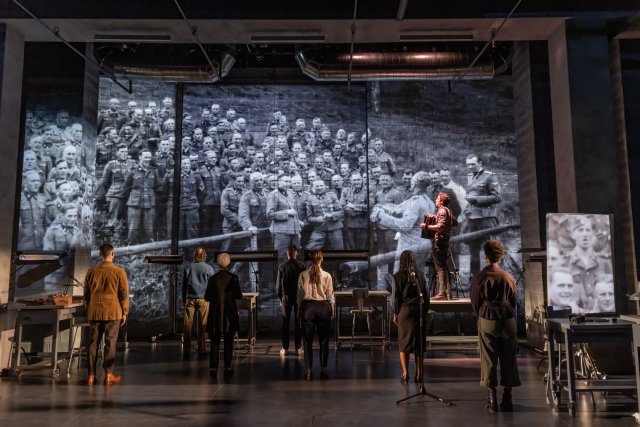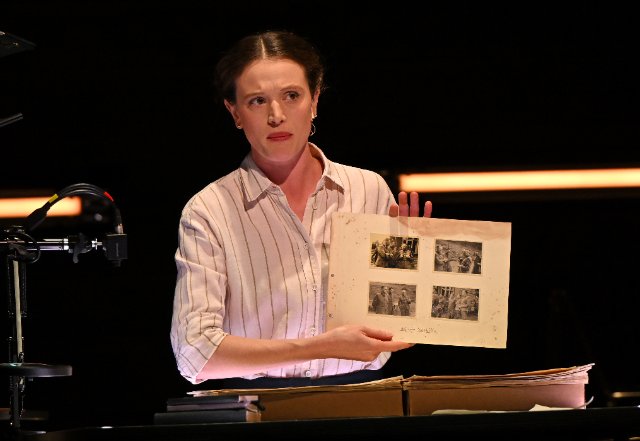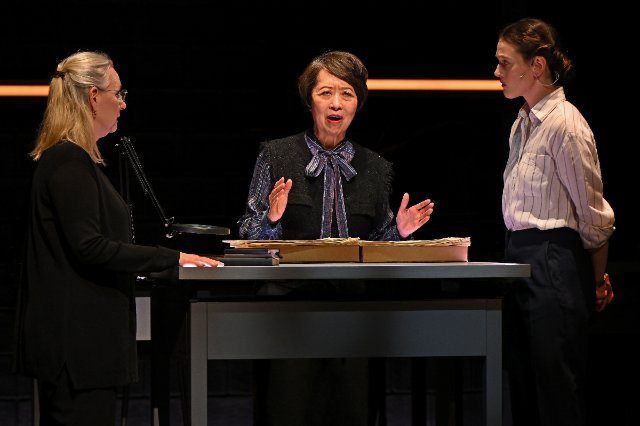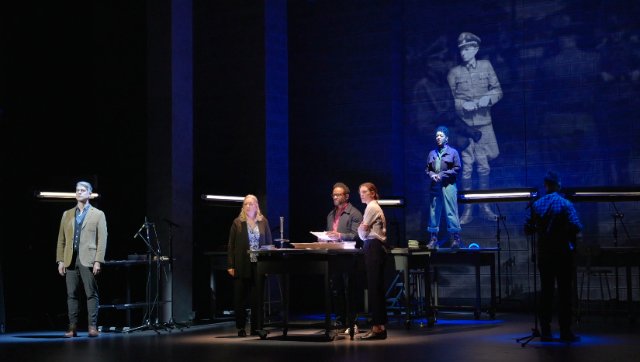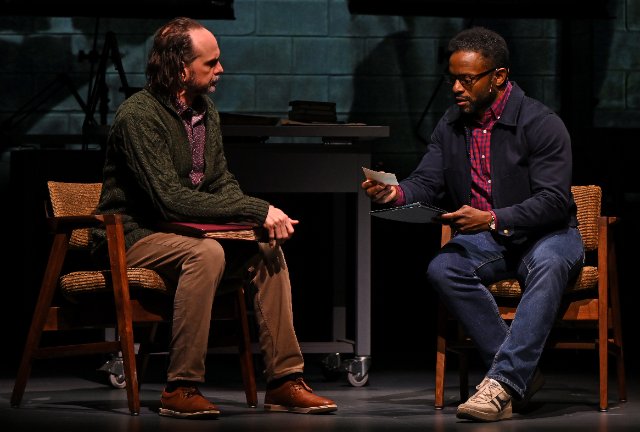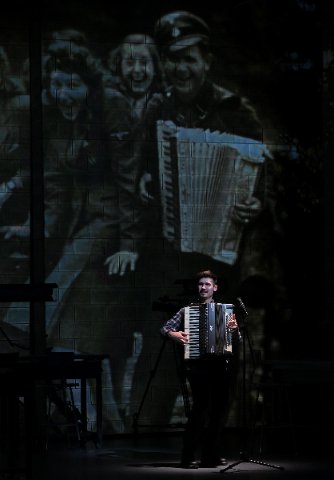Here There Are Blueberries
Documentary About Lives of Officers at Auschwitz
By: Victor Cordell - Apr 11, 2025
History plays a compelling role in the self-perception of societies. Yet, as important as history is, it is commonly forgotten or distorted. People routinely develop amnesia for important aspects of events as recent as the pandemic or administrations of recent presidents. The history upon which countries develop their self-worth is often distorted, twisting even favorable facts and suppressing those that don’t conform to the myth.
Another element of how history emerges pertains to its granularity. In the presence of free and active press, major public events that shape our broader understanding are typically revealed in real time. But later, research often unearths new facts through examination of personal and micro-events, that if accepted into the common wisdom, shades and sometimes radically shifts our view of the past.
At the center of Here There Are Blueberries, the US Holocaust Memorial Museum received a photo album in 2007 that a U.S. Army officer had found in Germany in 1946, purported to be of the Auschwitz concentration camp. This find was unique in two ways. Despite Auschwitz having been the largest facility for murder that the world has ever known, its activities were carefully secreted. Except for an album picturing victim/prisoners found by survivor Lili Jacob and released in 1980, no known pictures from Auschwitz were known to exist. Further, this newly-donated album depicted the lives of the camp’s Nazi administrators. Not a single image of a victim appears.
Indeed, this choreographed look into the lives of those who became cogs in the killing machine almost didn’t become known history. Why? The Holocaust Museum’s mission is to honor the victims of the Nazi horror, and perceived neutral or favorable depiction of the perpetrators could be used to glorify them. Only through the persistence of staff archivist Rebecca Erbelding, portrayed in the ensemble cast by Delia Cunningham, did the album see the light of day.
This Tectonic Theater Project (New York City) production presented by Berkeley Rep was conceived, directed, and written by Moisés Kaufman with co-author Amanda Gronich. The work falls into the unusual category of stage documentary. Eschewing dramatic conventions that could evoke great emotion, it does not produce the weeping responses that could be expected given the topic. But it does hew to the facts, resulting in a provocative and rewarding piece that examines the inner thinking of the perpetrators and provides a chilling lesson for our time. The further we move from the actual history, the more important and compelling are reminders such as this.
We witness arguments among Museum administrators and researchers as well as interviews with descendants of perpetrators. As it unfolds, we see the methodologies of historical research used to solve puzzles. Images and individuals are triangulated with other documents. Interviews corroborate facts, yield new directions, and provide additional contacts to expand the investigation. The play’s dramatic stiffness derives from dialog and soliloquy that are largely expository, yet, this is where its documentary character shines and gives it authenticity.
The play is effectively presented on a low-lit and austere stage with projections from the album and related images generously elaborating the narrative. Although actors perform main roles, each has multiple parts, often of characters of different age and gender than the actor.
The album in question was determined to be the work of Karl Höcher, adjutant to the commandant of Auschwitz. Many leaders could be identified from their photos, and the backstories and post-war trials for crimes against humanity of some are shared, like Rudoph Höss, the conceiver and developer of Auschwitz, and Joseph Mengele, the medical experimenter known as “The Angel of Death.”
Like much research, serendipity can be profound. In this case, the album photos were released in Germany, and the grandson of a man in three photos came forward – the first known descendant of a Nazi to assist the Museum. He made connections with other descendants that shed further light on the album. Along the way, historical research concluded with certainty that the two disparate albums mentioned above were compiled within 24 hours of each other, only several weeks before the end of WW II.
The pictures themselves make Blueberries particularly dispiriting. Rather than evil or even scowling, subjects appear quite ordinary, because this album was clearly compiled as an upbeat portrayal of the lives of Auschwitz officers. In any case, many of them came from pedestrian backgrounds, three leaders being identified as a bank clerk, an accountant, and a candy maker.
More disturbing is a series of photos that show Höcher with a bevy of SS Helferinnin, attractive young women who did clerical work in the administrative building, outside of the concentration/work/death areas of the camp. It is hard for many people to accept that a significant number of women could have been complicit in Nazi horrors. Like many others after the war, the Helferinnin, claimed to know nothing about the tragedies beyond the wall, but how could they not know of 300,000 Jews and other “undesirables” being gassed in three weeks of 1944 alone?
Among the benefits of cross-referenced documentary research of Nazis was linking information that proved knowledge by individuals of the killings. This led to exposing the nefarious and to their trials and convictions.
Research also revealed the character of people who fell into the Nazi movement and became unmoved by or participated in its hideous actions. They subordinated independent thought to that of a cult leader. They were drawn in by identity politics; desired to feel a significant part of a group; and were willing to conform to prescribed behavior. They were able to compartmentalize aspects of the movement that they couldn’t reconcile; deny inconvenient truths; reject individual responsibility by being a small part of a whole; and argue that there was no viable alternative to their participation.
Presciently, before the 2016 presidential election, Berkeley Rep produced It Can’t Happen Here, based on Sinclair Lewis’s novel about the rise of fascism through election in a democratic country. What parallels with Lewis’s novel and the findings of Blueberries can we see today?
Here There Are Blueberries, written by Moisés Kaufman and Amanda Gronich, is produced by Tectonic Theater Projects, presented by Berkeley Repertory Theatre, and plays on its stage at 2025 Addison Street, Berkeley, CA through May 11, 2025.

